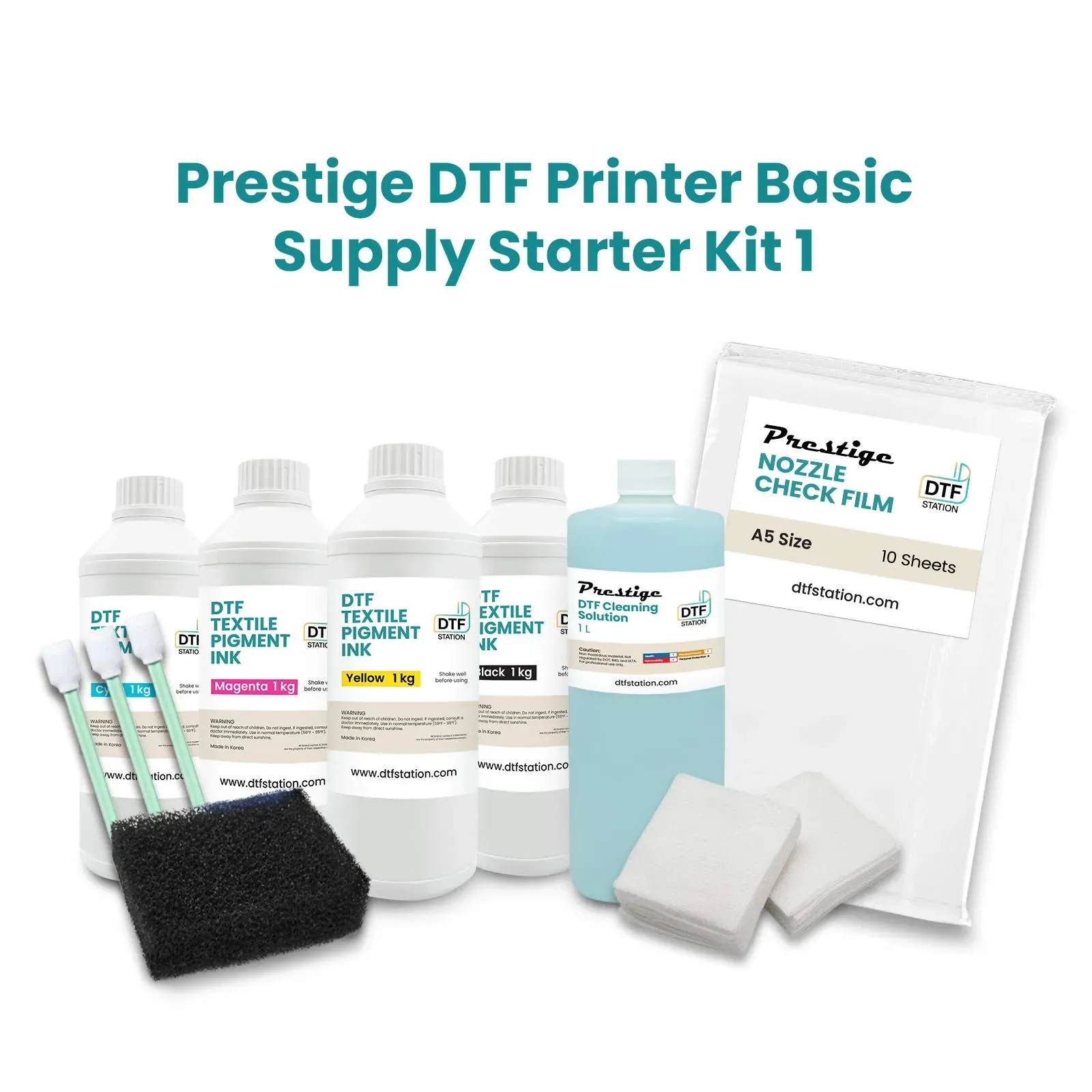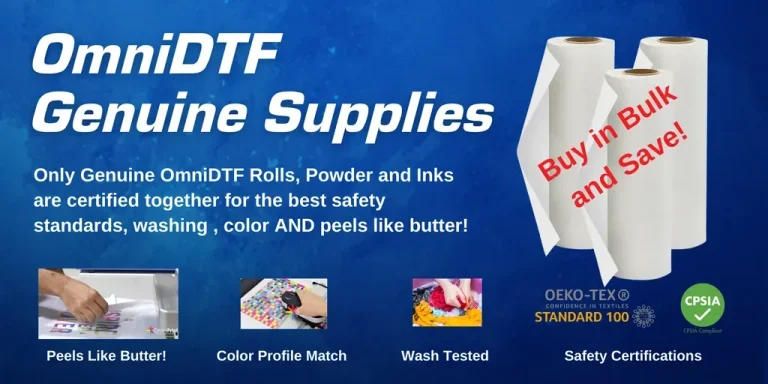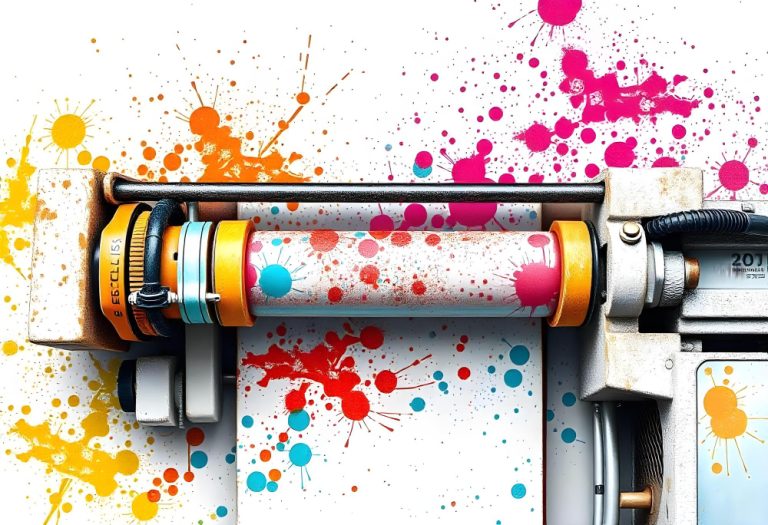DTF supplies are at the forefront of a crafting revolution, providing enthusiasts with innovative tools for creating eye-catching designs and vibrant graphics. This Direct to Film printing technique allows crafters to easily transfer detailed images onto various fabrics with remarkable color accuracy and durability. Whether you’re working on DIY DTF projects for personal use or exploring new DTF printing techniques for your business, understanding the nuances of DTF transfers can significantly enhance your results. In this guide, we’ll share essential crafting tips for DTF to ensure that every project you undertake not only looks stunning but also stands the test of time. With the right techniques and high-quality supplies, your crafting possibilities are limitless.
When it comes to supplies for Direct to Film printing, the landscape is ripe with options that cater to both novice crafters and seasoned professionals. This advanced heat transfer method has gained traction due to its ability to deliver high-resolution images onto fabric quickly and efficiently, making it a preferred choice among DIY enthusiasts. By exploring various heat transfer techniques, you can elevate your crafting game, whether you’re customizing textiles for a fun project or experimenting with intricate designs. The art of applying these innovative supplies goes hand in hand with the latest crafting tips and tricks, enhancing your overall experience and helping your creations shine. Join us as we delve deeper into the many facets of DTF technology, revealing how to maximize its potential in your projects.
Exploring the Benefits of DTF Printing Techniques
DTF printing techniques have advanced the way crafters approach textile art, providing a plethora of benefits that traditional methods may lack. One of the most remarkable advantages is the ability to print vibrant and intricate designs with exceptional clarity. With DTF, you can achieve a wider color gamut, making your creations pop against any fabric backdrop. This technique also offers a level of versatility not found in methods like screen printing, as it easily accommodates various substrates, allowing for creative projects ranging from apparel to home décor.
Moreover, DTF printing techniques are more forgiving for DIY enthusiasts. Unlike heat transfer methods, where precision is paramount, DTF allows for margin errors, making it easier for beginners to achieve professional results. The process of applying DTF transfers is straightforward and can be completed quickly, enabling crafters to focus more on creativity rather than the technicalities of printing processes. Whether you aim for custom garments or one-of-a-kind gifts, the accessibility of DTF techniques ensures everyone can explore their crafting ambitions.
Crafting Tips for Successful DTF Projects
When embarking on DIY DTF projects, there are several crafting tips that can elevate your results. First and foremost, investing in high-quality DTF supplies is crucial. The difference in outcomes between premium and subpar products can be substantial, impacting adhesion and vibrancy. Additionally, familiarizing yourself with your printer’s settings can greatly enhance the quality of your prints. Using the recommended DPI settings and ensuring your printer is compatible with DTF ink can save you time and frustration.
Another essential tip for successful DTF projects is meticulous preparation. Always pre-press your fabric before applying the transfer, as this improves adhesion and removes moisture that could cause issues down the line. Consider testing on scrap fabric to perfect your technique and find the ideal temperature and pressure settings unique to your heat press. By integrating these crafting tips into your process, your DTF projects will achieve a professional-grade finish that you can be proud of.
Understanding Common Mistakes in DTF Printing
Even the most experienced crafters can face challenges when working with DTF printing. Understanding common mistakes can help you avoid pitfalls that can ruin your hard work. A typical oversight is skipping the pre-press step, which is a critical part of ensuring that the fabric is properly prepared for your transfer. Neglecting this simple measure often leads to a lack of adhesion or uneven transfers that diminish the final product’s quality.
Another common mistake involves using improper temperature settings. Each heat press may require specific adjustments, and failing to double-check these can result in poor transfer quality. Always keep a reliable thermometer handy and test multiple settings if necessary. Additionally, don’t compromise on the quality of materials used; poorer quality DTF supplies can lead to disappointing outputs that compromise your crafting efforts.
The Future of DTF Supplies in Crafting
The future of DTF supplies looks bright, as advancements are making this technique even more accessible and effective for crafters. Innovations in film and ink technologies are leading to smoother applications, faster print speeds, and even richer color outputs. As the market expands, more affordable, high-quality products are readily available, encouraging new enthusiasts to jump into the DTF craft scene without breaking the bank.
Furthermore, the educational resources surrounding DTF printing continue to grow. Crafters are increasingly embracing online tutorials and community support, which fuels creativity and technical skill development. This collaborative spirit enhances the overall crafting ecosystem, fostering a community where individuals can share knowledge and techniques. With the rapid evolution of DTF technology, you can anticipate an exciting array of possibilities that will inspire your next crafting ventures.
Heat Transfer Methods: DTF vs. Other Techniques
When it comes to heat transfer methods, DTF printing exhibits several advantages over traditional techniques such as screen printing or heat transfer vinyl (HTV). For starters, DTF allows for vibrant colors and intricate designs without the need for multiple layers or complex setups. Unlike screen printing, which can be cumbersome for small runs or one-off projects, DTF provides unmatched flexibility, enabling quick turnarounds for custom orders or personal projects.
Additionally, DTF printing eliminates the need for weeding required in HTV methods, significantly simplifying the application process. You simply print, transfer, and adhere your designs, making it an ideal choice for beginners or busy crafters looking to create without hassle. As crafting trends continue to evolve, understanding how DTF compares to other heat transfer methods will help you choose the best technique for your specific project needs.
Mastering DTF Printing Techniques for Professionals and Hobbyists
Mastering DTF printing techniques is essential for both professionals and hobbyists aiming to take their crafting to the next level. For professionals, understanding the intricacies of DTF supplies can lead to more efficient production processes and outstanding finished products capable of impressing clients. It allows crafters to expand their service offerings, from creating custom apparel to personalized home goods, thereby growing their businesses and catering to diverse customer demands.
On the other hand, hobbyists can also greatly benefit from mastering DTF techniques, turning their passions into small business ventures or creating unique gifts for loved ones. The learning curve involved in perfecting DTF supplies and techniques fosters creativity and experimentation, ensuring that each crafting session is a fun and fulfilling experience. Regardless of your intent, investing time into mastering DTF printing will undoubtedly enhance the quality and scope of your projects.
Frequently Asked Questions
What are DTF supplies and how do they work?
DTF supplies include special films and inks used in Direct to Film (DTF) printing, allowing for stunning transfers onto various fabrics. DTF works by printing designs onto a film that is then heat transferred onto surfaces like cotton and polyester, providing vibrant colors and intricate details.
What crafting tips can improve my DTF transfers?
To enhance your DTF transfers, choose high-quality films for better adhesion and color vibrancy. Additionally, always pre-press your garments to remove moisture and wrinkles, and ensure your printer settings are optimized for high-resolution outputs.
What kind of printer settings are ideal for DTF printing techniques?
For optimal DTF printing techniques, use a printer set to high resolution, ideally 1200 DPI. Additionally, ensure you are using specialized DTF inks that are compatible with your chosen films for the best results.
What are the recommended heat transfer methods for DTF supplies?
For DTF supplies, the recommended heat transfer method is typically at 320°F for 10-15 seconds with medium pressure. Always check your heat press manufacturer’s instructions to achieve the best adhesion and durability.
How should I care for my DTF projects after the transfer is applied?
After transferring with DTF supplies, allow the transfer to cool before peeling the film. For enhanced durability, a secondary press with a protective sheet is advised, ensuring that your projects withstand multiple washes and maintain vibrancy.
What common mistakes should I avoid when using DTF supplies?
Common mistakes include skipping the pre-press step, using incorrect temperature settings, and opting for poor-quality materials. Each of these can negatively impact the transfer quality and longevity of your designs.
| Key Points | Details | |
|---|---|---|
| Understanding DTF Transfers | DTF allows vibrant designs to be printed on various surfaces, offering greater detail than traditional methods. | |
| Choosing the Right Film | High-quality glossy films enhance adhesion and color vibrancy for better results. | |
| Printing Settings | Use at least 1200 DPI resolution with specialized DTF ink for optimal output. | |
| Pre-Pressing the Garment | Pre-press the garment to remove moisture and wrinkles for better adhesion; 5-10 seconds under heat press is recommended. | |
| Temperature and Pressure Settings | Best results at 320°F for 10-15 seconds with medium pressure; follow manufacturer’s instructions. | |
| Post-Press Care | Allow to cool before peeling; consider a secondary press with a protective sheet for durability. | |
| Common Mistakes to Avoid | Skipping pre-press, incorrect temperatures, and using poor quality materials can lead to disastrous results. | |
| Future Trends | Continual innovations in inks and films enhance the quality and efficiency in DTF printing; community engagement is key. | |
Summary
DTF supplies are transforming the crafting landscape by enabling crafters to create personalized textiles that are both eye-catching and durable. With the right techniques in mind, such as selecting high-quality materials and maintaining optimal printer settings, crafters can significantly enhance the quality of their transfers. Adapting to common pitfalls, like neglecting the pre-press step or using subpar supplies, is crucial for achieving professional results. As DTF technology continues to advance, staying informed through community engagement and resources will empower creators to explore new possibilities in their crafting endeavors. Ultimately, embracing DTF supplies can elevate your projects and leave a lasting impact on your audience.





